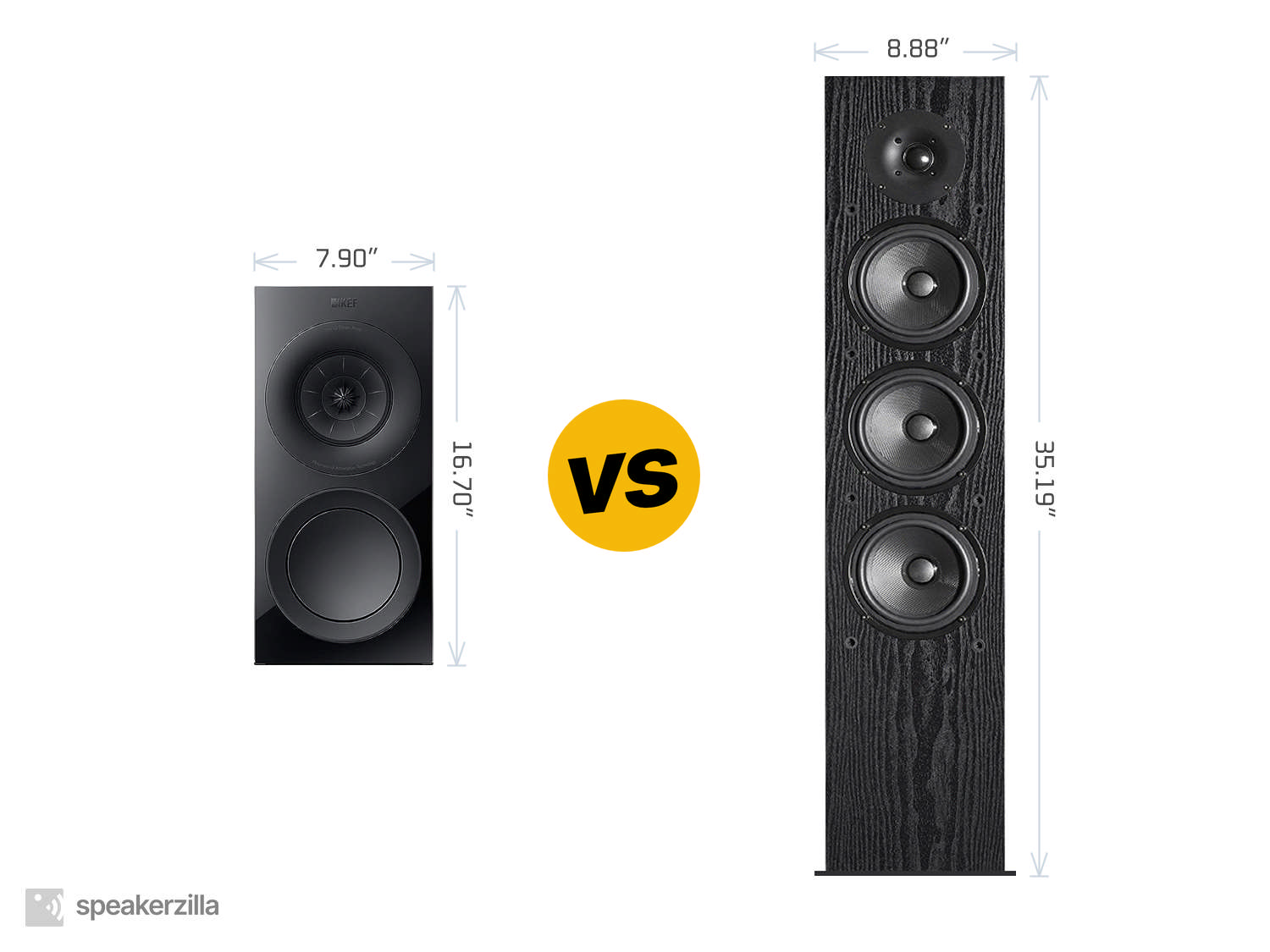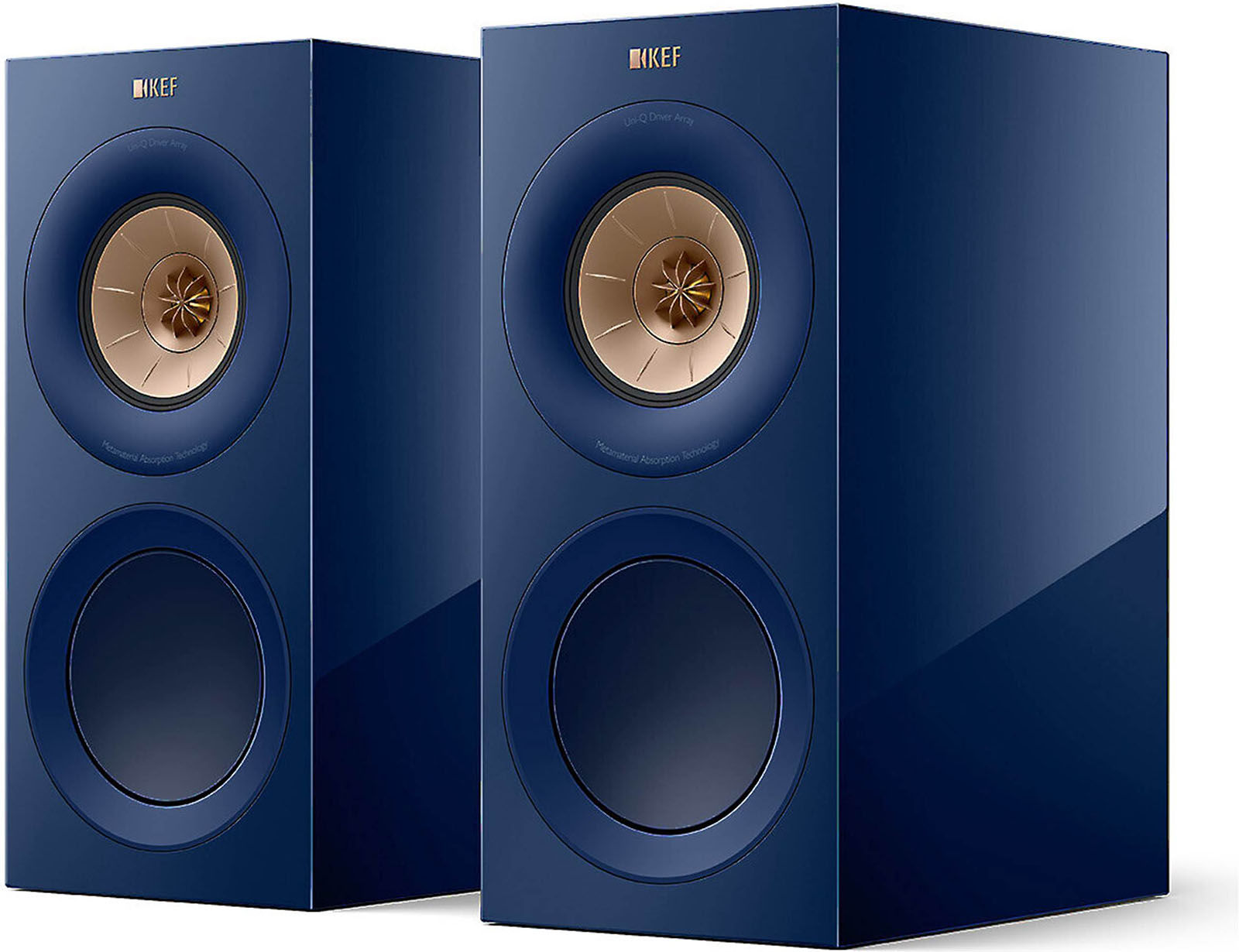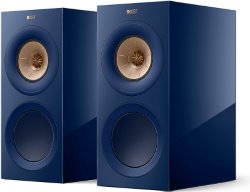KEF R3 Meta vs. Pioneer SP-FS52

| KEF R3 Meta Bookshelf Speakers | Pioneer SP-FS52 Tower Speakers |
| MSRP | |
| $2200 | $260 |
| Dimensions (H × W × D) | |
|
16.70” × 7.90” × 13.50” 424mm × 201mm × 343mm |
35.19” × 8.88” × 10.63” 894mm × 226mm × 270mm |
| Power Type | |
| Passive | Passive |
| Frequency Response | |
| 58-28,000 Hz | 40-20,000 Hz |
|
Amazon.com
|
Amazon.com
|
Key Takeaways
TLDR Summary: In the realm of high-fidelity audio, the KEF R3 Meta bookshelf speakers and Pioneer SP-FS52 tower speakers represent two distinct sonic philosophies. The R3 Meta, with KEF's cutting-edge Metamaterial Absorption Technology (MAT), offers an impeccably detailed soundstage and precise imaging, tailored for the discerning audiophile in a compact form. Meanwhile, the SP-FS52, designed by the legendary Andrew Jones, provides an exceptional value proposition with its impressive scale and dynamic range, delivering a warm and rich performance well-suited for casual listeners. Both sets promise immersive experiences, yet cater to different preferences in space, budget, and sonic character.
Speaker Comparison
The quest for the perfect soundstage often leads audiophiles to the treacherous crossroads of budget and performance. It's there where the KEF R3 Meta bookshelf speakers and the Pioneer SP-FS52 tower speakers stand as testaments to what can be achieved at opposite ends of the spectrum. KEF's R3 Meta, part of the revamped R series, is a compact speaker that punches well above its weight, while the SP-FS52, a brainchild of renowned designer Andrew Jones, is a towering figure in the budget-friendly audio space. Yet, the differences between the two are as stark as their physical dimensions.
The Aesthetics and Build Quality
KEF's R3 Meta speakers exude a premium appeal with their sleek, modern design and meticulous build quality. The Uni-Q driver array, a KEF signature technology, is not only a marvel of acoustic engineering but also a striking visual focal point. In contrast, the Pioneer SP-FS52, though elegantly understated, opts for a more traditional look. The curved cabinet design isn't just for aesthetics; it also serves to reduce standing waves inside the cabinet, thus mitigating sound distortion. However, the SP-FS52's finish and overall build quality, while solid, don't quite communicate 'luxury' in the same way the R3 Metas do.

 (at Amazon.com)
(at Amazon.com)Sound Quality: Detail and Balance
When it comes to sound, the KEF R3 Meta is a revelation. The speakers offer an astonishing level of detail and a balanced sound profile that can handle a wide gamut of musical genres with grace. The Uni-Q driver ensures a wide sweet spot, so you're immersed in a three-dimensional soundstage, regardless of your position in the room. The Pioneer SP-FS52, while not as refined, still performs exceptionally for its price point. The tower design allows for greater bass response, and the three 5.25-inch woofers deliver a full-bodied sound that can fill a room with ease. However, the SP-FS52 may lack the same level of intricacy and nuance that the R3 Meta speakers provide.
Power Handling and Efficiency
The KEF R3 Meta is quite efficient and doesn't require an exorbitant amount of power to come alive. However, they will reveal the quality of the amplifier used, rewarding higher-quality electronics with a more pristine sound output. The Pioneers, with their sensitivity rating of 87 dB and impedance of 6 ohms, are relatively easy to drive as well, but they tend to be more forgiving when it comes to the quality of the amplification. This could be a significant consideration for those who have not yet invested in high-end amplification.

 (at Amazon.com)
(at Amazon.com)Both the KEF R3 Meta and the Pioneer SP-FS52 boast impressive frequency response ranges. However, the KEF's ability to deliver crisp highs without sibilance, thanks to the Meta material used in its tweeter, is particularly noteworthy. The bass is tight and accurate, though for those seeking earth-shattering lows, a subwoofer might be a worthy addition. The Pioneers, being floorstanders, have a natural advantage in the lower frequencies, producing a more pronounced bass, though it may not match the KEF's precision.
Compare to similar speakers
In the realm of spatial imaging, the KEF R3 Meta is masterful. The proprietary Uni-Q driver presents an immersive soundstage that extends beyond the speakers' physical confines. This ability to disappear acoustically is something that the larger, more imposing Pioneer towers can struggle with. They do offer a good sense of scale, but the precision with which the KEFs place instruments within the soundstage is not as easily replicated by the SP-FS52s.
Concluding the comparison, the choice between the KEF R3 Meta and the Pioneer SP-FS52 speakers ultimately depends on the listener's priorities. If one seeks a refined, detailed sound with a sophisticated design, the R3 Meta is the clear choice. However, if budget constraints are paramount and there's a need for a speaker that can deliver a satisfying performance without breaking the bank, the Pioneer SP-FS52 stands tall as an excellent value proposition. Both sets of speakers reflect their designers' commitment to quality audio, albeit in different classes of the audiophile market.
- KEF R3 Meta reviews and FAQs
- Pioneer SP-FS52 reviews and FAQs
Check Current Prices: |
|
|
Amazon.com
|
Amazon.com
|
Affiliate Disclosure: As an Amazon Associate, we earn from qualifying purchases.

